Ficus benjamina (& most other commonly grown tropical Ficus)
tapla (mid-Michigan, USDA z5b-6a)
18 years ago
Featured Answer
Comments (64)
flash14756
18 years agolast modified: 9 years agomrbrownthumb
18 years agolast modified: 9 years agoRelated Discussions
First Time Plant Owner Brand New Ficus Tree
Comments (15)Generally speaking, with any plant you should water thoroughly, until the soil is saturated and runs out freely. I personally put my plants (even the 5 1/2 foot tall cacti, which is always a fun time) in the shower and spray them down, let them drain, and then bring them back out, so I have no idea what a ballpark figure would be. I'd say you're probably better off to move the plastic pot back and forth, because if you think it's heavy *now*, wait until you try to lift a 16-inch clay pot full of wet soil. That said, people do manage, sometimes, to water without moving their plant all over creation. Not sure how to advise on this one, because it depends on how blocked the drainage holes are, the season, the type of soil you have in the pot, how wet the plant is now, the temperature, etc. Also, to go back a few topics: Spider mites are possible, but not likely to affect the whole tree all at once within a few days of bringing it home. I would do a google search for pictures, so you'll know them if you see them, but I wouldn't worry about them either. dgmarie: I would think that neither the alkalinity nor the iron content of the well water is likely to be that big of a deal. Or at least, I would assume that the salt content of the softened water is a much bigger deal. I wouldn't worry about adding supplemental iron: it's probably not necessary....See MoreFicus Benjamina losing all leaves! Help!
Comments (61)What kind of soil is it in? Virtually all containerized houseplants need regular nutritional supplementation; so YES, you should have a good fertilizer on hand and have a strategy in place that includes regular fertilizing that is adjusted in relation to the changes in growth habit as the plant makes it's way through the growth cycle. No one can tell you how to fertilize w/o knowing something about your soil and your watering habits, because those factors determine how much you use and how often you use it. If I guessed you were just getting interested in learning how to best provide for your plants' cultural needs, would I be right? In most cases, the manner in which a person addresses the issues for which you seek guidance will depend on your level of experience. I use, as do many others, and highly recommend Dyna-Gro's Foliage-Pro 9-3-6 fertilizer. There are a number of reasons for this, and I can direct you to a thread that lays out those reasons if you have interest. Your plant probably shouldn't be fertilized until you see signs of new growth. My guess is, the soil has been kept overly wet, which accounts for a very high % of the problems for which folks eventually arrive here in search of resolution. Once all the leaves fall, the amount of water your plant uses will be minuscule, so make sure you do not over-water. If you don't know how to use a wooden dowel/skewer as a tell, and want to, just ask. Many folks here use or have used that method with good results. It doesn't lie and will tell you when your plant does/doesn't need water. Al...See MoreBADLY compacted Ficus Benjamina - How Agressive Can I Root Prune?
Comments (8)How aggressively you CAN root prune depends on your tree's stored energy level. Heavy root pruning of a weak tree can be damaging or disastrous, while root pruning a healthy tree while it's growing robustly can usually be done with impunity if follow-up care is appropriate. As you know, the best time to work your (tropical ficus) tree hard is early summer. There is a window between Father's Day and Independence Day that in which I do as much repotting of houseplants and tropicals as possible. Root pruning isn't an all or nothing affair. I've been working on the roots of a Taxus (yew) as a bonsai for more than 8 years, trying to reduce a very deep root system to where I can get the tree in a bonsai pot. The top makes a very impressive bonsai already because I've been working on its refinement, but a plastic clothes basket doesn't meld with the tree in harmony as attractive as a discerning eye might demand. The point is, it's often better to consider the viability of the tree and work in stages than to shoot for the moon in one fell swoop. I'd set some time aside to bare root, and I'd keep at it until you accomplished that worthy goal. Future repots will be easier, and leaving the hardened soil only assures a limited tree. Here is something that explains the seeming paradox about why plants need air in the soil. I'm copy/pasting from something I left on another thread, but it should still offer an understanding: Though roots form readily and often seemingly more quickly on many plants propagated in water, the roots produced are quite different from those produced in a soil-like or highly aerated medium (perlite - screened Turface - calcined DE - seed starting mix, e.g.). Physiologically, you will find these roots to be much more brittle than normal roots due to a much higher percentage of aerenchyma (a tissue with a greater percentage of intercellular air spaces than normal parenchyma). Aerenchyma tissue is filled with airy compartments. It usually forms in already rooted plants as a result of highly selective cell death and dissolution in the root cortex in response to hypoxic conditions in the rhizosphere (root zone). There are 2 types of aerenchymous tissue. One type is formed by cell differentiation and subsequent collapse, and the other type is formed by cell separation without collapse ( as in water-rooted plants). In both cases, the long continuous air spaces allow diffusion of oxygen (and probably ethylene) from shoots to roots that would normally be unavailable to plants with roots growing in hypoxic media. In fresh cuttings placed in water, aerenchymous tissue forms due to the same hypoxic conditions w/o cell death & dissolution. Note too, that under hypoxic (airless - low O2 levels) conditions, ethylene is necessary for aerenchyma to form. This parallels the fact that low oxygen concentrations, as found in water rooting, generally stimulate trees (I'm a tree guy) and other plants to produce ethylene. For a long while it was believed that high levels of ethylene stimulate adventitious root formation, but lots of recent research proves the reverse to be true. Under hypoxic conditions, like submergence in water, ethylene actually slows down adventitious root formation and elongation. If you wish to eventually plant your rooted cuttings in soil, it is probably best not to root them in water because of the frequent difficulty in transplanting them to soil. The brittle "water-formed" roots often break during transplant & those that don't break are very poor at water absorption and often die. The effect is equivalent to beginning the cutting process over again with a cutting in which vitality has likely been reduced. If you do a side by side comparison of cuttings rooted in water & cuttings rooted in soil, the cuttings in soil will always (for an extremely high percentage of plants) have a leg up in development on those moved from water to a soil medium for the reasons outlined above. ******************************* You can skip the rooting hormone and fungicide if you want. They're not necessary. I do use a little Superthrive (for its auxin) as a root soak after repotting, though. I've done some experimenting with loose controls in place and while it has proven useless as a 'tonic', it is effective at stimulating root growth and root division. I fill a tub with water and a little Superthrive & fully saturate the soil in the tub immediately after repotting. Securing the plant to the pot so it can't move in relation to the pot fractionalizes the time it takes for the tree to establish in its new digs, too. Al...See MoreWhy does Ficus Lyrata Appear to be Such a Trouble Plant?
Comments (7)Some examples of post covering this topic: http://forums2.gardenweb.com/discussions/3600208/trouble-shooting-a-just-bought-fiddleleaf-immediate-care-tips-please http://forums2.gardenweb.com/discussions/3596282/fiddle-leaf-advice?n=6 http://forums2.gardenweb.com/discussions/1478337/fiddle-leaf-fig-training-pruning?n=32 http://forums2.gardenweb.com/discussions/3589587/fiddle-leaf-figs-new-growth-with-spots?n=1 http://forums2.gardenweb.com/discussions/3589781/brown-spots-on-my-fiddle-leaf-fig-tree-too-much-moisture-in-the-soil?n=4 http://forums2.gardenweb.com/discussions/3582640/is-there-enough-light-for-my-newly-acquired-fiddle-leaf-fig-tree?n=5 http://forums2.gardenweb.com/discussions/3524742/fiddle-leaf-fig-troubles?n=14 http://forums2.gardenweb.com/discussions/3303718/fiddle-leaf-fig-ficus-lyrata-multiple-trunks-into-one?n=38...See MoreBaby G (USDA:10a, Sunset:21&23 SoCal-NE. Mt Washington, Lo-Chill: 200-400 Hrs, So
18 years agolast modified: 9 years agotapla (mid-Michigan, USDA z5b-6a)
18 years agolast modified: 9 years agomek88
16 years agolast modified: 9 years agobirdsnblooms
16 years agolast modified: 9 years agotapla (mid-Michigan, USDA z5b-6a)
16 years agolast modified: 9 years agomariateresa
16 years agolast modified: 9 years agogombei
16 years agolast modified: 9 years agotapla (mid-Michigan, USDA z5b-6a)
16 years agolast modified: 9 years agowatergal
16 years agolast modified: 9 years agogombei
16 years agolast modified: 9 years agotapla (mid-Michigan, USDA z5b-6a)
16 years agolast modified: 9 years agogombei
16 years agolast modified: 9 years agotapla (mid-Michigan, USDA z5b-6a)
16 years agolast modified: 9 years agowolfeyes65
16 years agolast modified: 9 years agogreenchic
16 years agolast modified: 9 years agotapla (mid-Michigan, USDA z5b-6a)
16 years agolast modified: 9 years agogreenchic
16 years agolast modified: 9 years agotapla (mid-Michigan, USDA z5b-6a)
16 years agolast modified: 9 years agogombei
16 years agolast modified: 9 years agotapla (mid-Michigan, USDA z5b-6a)
16 years agolast modified: 9 years agogombei
16 years agolast modified: 9 years agosorensensue_hotmail_com
16 years agolast modified: 9 years agotapla (mid-Michigan, USDA z5b-6a)
16 years agolast modified: 9 years agogombei
16 years agolast modified: 9 years agosuzcue
16 years agolast modified: 9 years agonevado
16 years agolast modified: 9 years agotapla (mid-Michigan, USDA z5b-6a)
16 years agolast modified: 9 years agokaren715
16 years agolast modified: 9 years agotropbavard
16 years agolast modified: 9 years agotapla (mid-Michigan, USDA z5b-6a)
16 years agolast modified: 9 years agotapla (mid-Michigan, USDA z5b-6a)
16 years agolast modified: 9 years agotropbavard
16 years agolast modified: 9 years agotapla (mid-Michigan, USDA z5b-6a)
16 years agolast modified: 9 years agoaw211_lafn_org
15 years agolast modified: 9 years agotapla (mid-Michigan, USDA z5b-6a)
15 years agolast modified: 9 years agoAnneHochberg
11 years agolast modified: 9 years agotapla (mid-Michigan, USDA z5b-6a)
11 years agolast modified: 9 years agoAnneHochberg
11 years agolast modified: 9 years agoAnneHochberg
11 years agolast modified: 9 years agotapla (mid-Michigan, USDA z5b-6a)
11 years agolast modified: 9 years agoAnneHochberg
11 years agolast modified: 9 years agotapla (mid-Michigan, USDA z5b-6a)
11 years agolast modified: 9 years agoJMJ 4Life
10 months agotapla (mid-Michigan, USDA z5b-6a)
10 months agolast modified: 10 months agoJMJ 4Life
10 months agotapla (mid-Michigan, USDA z5b-6a)
10 months agoJMJ 4Life
10 months agotapla (mid-Michigan, USDA z5b-6a)
10 months ago
Related Stories

HOLIDAYSGuys, Where Do You Feel Most at Home?
For Father’s Day, we’d like to hear from the men. What part of your house makes you feel most like yourself — grounded and alive?
Full Story
GARDENING AND LANDSCAPINGLay of the Landscape: Tropical Garden Style
Create a vacation paradise in your backyard even if temperatures sometimes dip with these guidelines for tropical-style gardens
Full Story
HOUSEPLANTSSee How Fiddleleaf Fig Trees Can Liven Up Your Decor
The tropical houseplant with big green leaves adds a cheerful and striking design element to rooms
Full Story
HOUSEPLANTS8 Essentials for Healthy Indoor Plants
Houseplants add so much to our homes — and can thrive when grown in the right conditions. Keep these tips in mind
Full Story
HOUSEPLANTSPlay Up Some Fiddleleaf Figs for a Lively Indoor Tune
Strike a dramatic chord in a minimalist scene or a country note in a rustic setting — fiddleleaf fig plants harmonize with any style
Full Story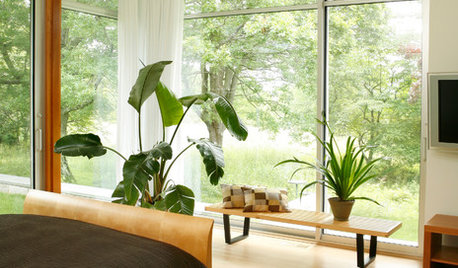
DECORATING GUIDESCreate Your Own Shangri-la With Bird of Paradise Plants
Quintessentially tropical, this broad-leaved beauty can transform bland interiors in the batting of a frond
Full Story
MOST POPULARThe Perfect Houseplant for People Who Kill Houseplants
If you can fill a jar with water, you can keep golden pothos vine happy — and it will pay you back with cleaner air and a greener home
Full Story
PETSIncredible Home Catwalks Make for Purr-fectly Happy Felines
Walkways and tunnels custom built to the tune of about $35,000 keep a homeowner’s 18 cats on cloud nine
Full Story
ARTThe Beauty of Bonsai — Living Art, Rooted in Harmony
Create your own emblem of nature's balance with an art form dating back 1,000 years
Full Story
TREESHow to Use Trees Inside
Bring nature close by integrating the beauty of trunks and trees — even smaller leafy trees — into your home
Full Story


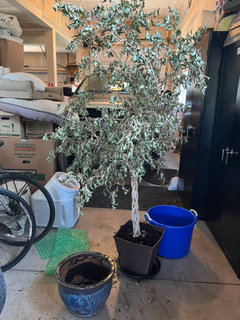



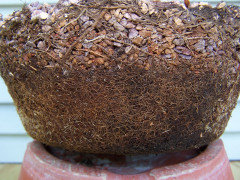


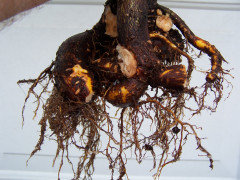

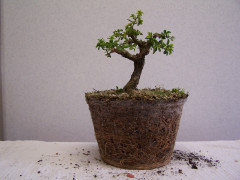


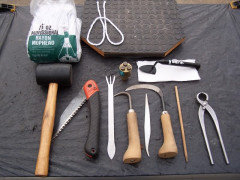




birdsnblooms